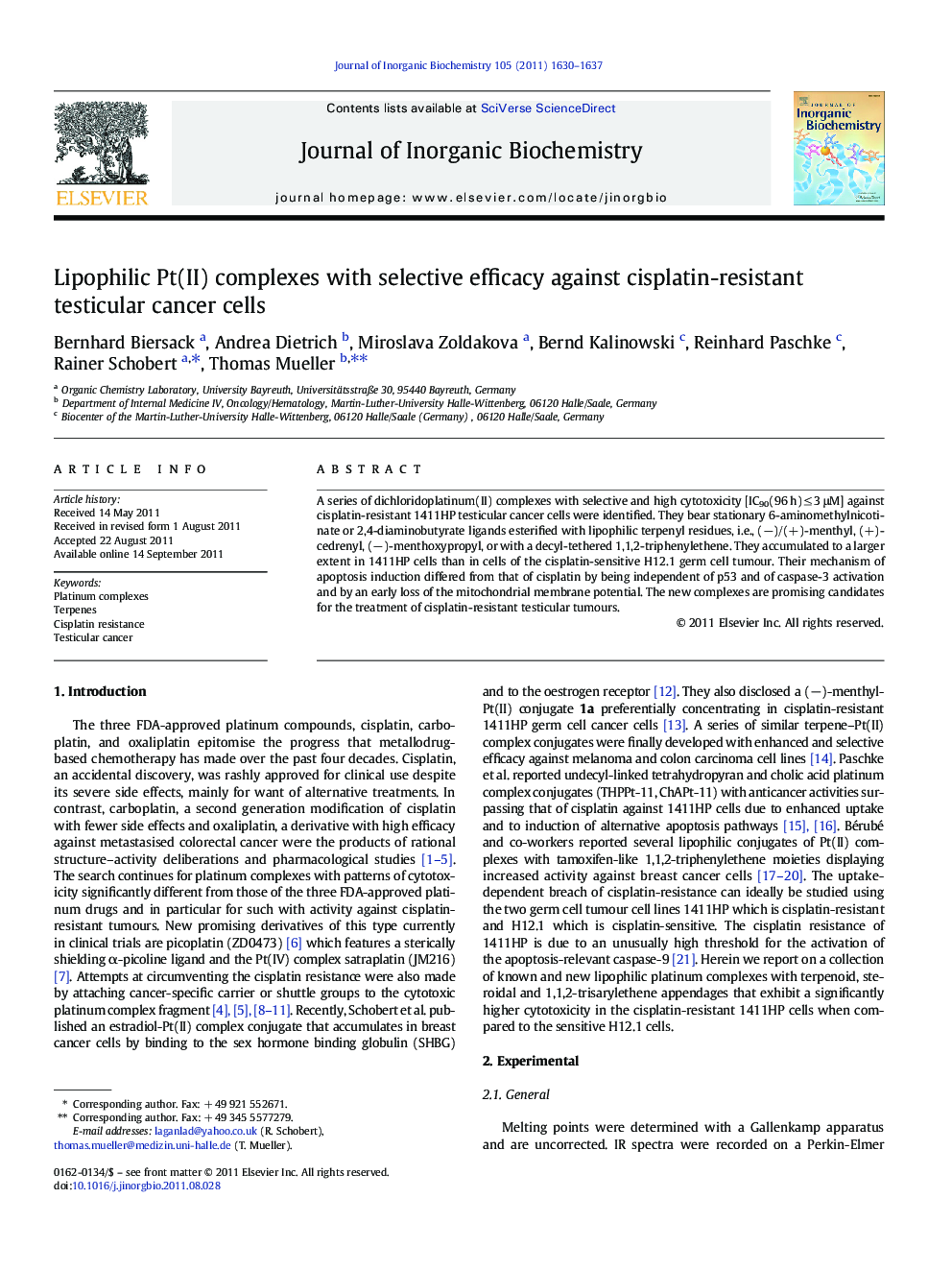| Article ID | Journal | Published Year | Pages | File Type |
|---|---|---|---|---|
| 1317882 | Journal of Inorganic Biochemistry | 2011 | 8 Pages |
A series of dichloridoplatinum(II) complexes with selective and high cytotoxicity [IC90(96 h) ≤ 3 μM] against cisplatin-resistant 1411HP testicular cancer cells were identified. They bear stationary 6-aminomethylnicotinate or 2,4-diaminobutyrate ligands esterified with lipophilic terpenyl residues, i.e., (−)/(+)-menthyl, (+)-cedrenyl, (−)-menthoxypropyl, or with a decyl-tethered 1,1,2-triphenylethene. They accumulated to a larger extent in 1411HP cells than in cells of the cisplatin-sensitive H12.1 germ cell tumour. Their mechanism of apoptosis induction differed from that of cisplatin by being independent of p53 and of caspase-3 activation and by an early loss of the mitochondrial membrane potential. The new complexes are promising candidates for the treatment of cisplatin-resistant testicular tumours.
Graphical abstractA series of dichloridoplatinum(II) complexes with selective and high cytotoxicity against cisplatin-resistant 1411HP testicular cancer cells were identified. They bear stationary 6-aminomethylnicotinate or 2,4-diaminobutyrate ligands esterified with particular terpenes (ent-1a, 1d, 1e, 1g) or with a decyl-tethered 1,1,2-triphenylethene (1l).Figure optionsDownload full-size imageDownload as PowerPoint slide
